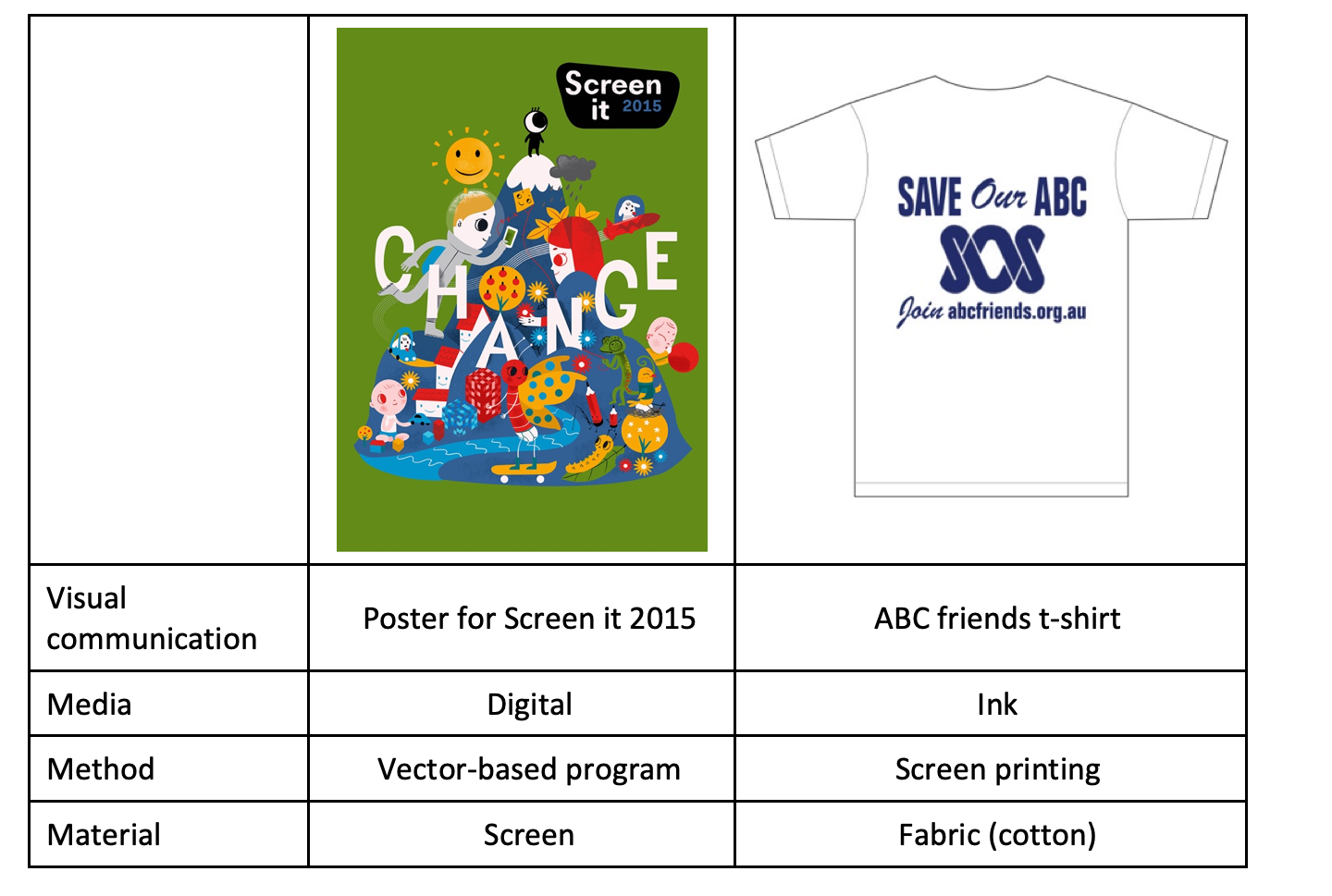In addition to acquiring the vocabulary of design elements and principles, VCD students are required to understand the terminology associated with design
methods, media and
materials (3Ms), and how to differentiate between these three terms.
This strategy helps students to understand the differences between these key terms and links each term to examples.
- Teacher introduces the nouns
methods, media, and materials
- Students complete a
think/ink/pair/share. This strategy is useful in promoting inclusion and confidence of all students. Students have time to consider responses, can ‘rehearse’ oral responses by writing, and then share firstly in a pair situation, then in a small group, and finally with the whole class.
- Individually each student
thinks about the meaning of each of the 3Ms drawing on their prior knowledge of the words.
- Each student writes (or
inks) their definition
- Students form
pairs and
share their oral and written definitions.
- Two pairs join to form a small group.
- The small group decides on collective definitions for each term
- Teacher asks for group representatives to offer definitions to the whole class.
- Teacher collates responses to arrive at definitions such as those in the table below.
- Teacher uses the following example to illustrate the 3Ms.
- Teacher draws a shape on the whiteboard, such as a square.
- Teacher asks students to identify the 3Ms used to create the shape
- Students should identify and explain that the whiteboard marker was the media used to draw (method) the shape on the whiteboard (material)
- Teacher leads a discussion to define:
- Method as the technical process used to create visual communication
- Media as the applications used to make the visual communication
- Materials as the surface or substrate (layer) that visual communication is applied to or constructed from
- Students create three columns titled
Methods, Media, and
Materials, writing the above definitions down.
- After the demonstration, the teacher reads or shows on the PowerPoint/whiteboard words from the lists in the table below in jumbled order.
- In pairs or small groups, students classify sort the words into
Methods, Media and
Materials and write in the relevant columns.
- Small groups of students regroup into larger groups and share their sorted lists.
- Teacher leads a whole class discussion to identify any misconceptions or to resolve any disputes about the sorting. The teacher may also ask clarifying questions and reiterate the correct responses.

(Adapted from
VCD Study Design 2018–2022)
The task may be extended to require the student to apply new knowledge of vocabulary to visual examples such as those below or in the classroom.

Curriculum links for the above example:
VCAVCDE001,
VCAVCDV002,VCAVCDR005,
VCAVCDR011.